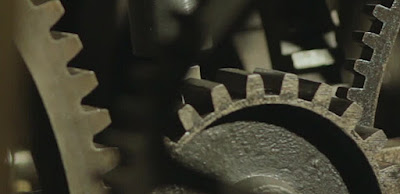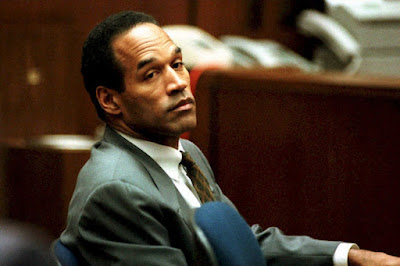KEY FACTS
The Supreme Court ruled 6-3 in New York State Rifle & Pistol Association v. Bruen that New York’s concealed carry law violates the Fourteenth Amendment, by stopping “law-abiding citizens with ordinary self-defense needs” from practicing their Second Amendment right to bear arms.
The challenge, brought by gun owners in the state, argued New York’s law that only gave licenses to firearm owners who have “proper cause” was unlawful under the Second Amendment, because licenses are too often denied and the decisions are left up to the personal discretion of individual licensing officers.
Justices agreed that the law was overly burdensome, with Justice Clarence Thomas writing for the court’s majority that the Second Amendment is not some “second-class right,” and other constitutional rights don’t “require individuals to demonstrate to government officers some special need.”
The Second Amendment’s definition of the right to “bear arms” includes “carrying handguns publicly for self-defense,” the court ruled, rejecting New York’s argument that the law is in line with historical precedents that limit how firearms can be carried in public places.
Justices also disputed New York’s argument that the law is designed to help keep firearms out of “sensitive places” where more people congregate, ruling that distinction was too broad, and Thomas argued there’s “no historical basis for New York to effectively declare the island of Manhattan a ‘sensitive place’ simply because it is crowded.”
The 6-3 conservative court had signaled it was likely to rule against the law in a November hearing in the case, in which justices said letting individual officers exercise so much discretion over whether to issue licenses “seems inconsistent” with the Second Amendment and suggested they were sympathetic to people wanting to carry concealed weapons in places like New York City, where there’s a higher risk of crime.
CRUCIAL QUOTE
The Second Amendment’s right to bear arms “naturally encompasses public carry,” Thomas wrote in the court’s opinion, arguing confining keeping firearms for self-defense to the home “would make little sense.”
CHIEF CRITIC
Justice Stephen Breyer argued the court’s ruling “ignores” the “significant dangers” of gun violence “and leaves states without the ability to address them.”
“Many States have tried to address some of the dangers of gun violence ... by passing laws that limit, in various ways, who may purchase, carry, or use firearms of different kinds,” Breyer wrote in his dissent, which was joined by Justices Sonia Sotomayor and Elena Kagan. “The Court today severely burdens States’ efforts to do so.”
WHAT TO WATCH FOR
Other states that have similar laws to fall. New York’s restrictive concealed carry law—which said the state “may issue” licenses, but officers can use discretion and are not obligated to issue them to people—is similar to other laws in Democratic-led states across the country, including California, Delaware, Hawaii, Maryland, Massachusetts and New Jersey. (Other states require permits but say they “shall issue” them to people, which is much less restrictive.)
Those laws are likely now at risk of being overturned under the court’s ruling. New York Gov. Kathy Hochul (D) has said she intends to call a special session of the state legislature to pass a new law that would comply with the court’s ruling, however, and other states may do the same. The court’s permissive view of the Second Amendment and ruling that it includes public carry could also be used to roll back other firearm laws.
TANGENT
The court’s ruling comes weeks after the U.S. faced a new series of high-profile mass shootings that have put a renewed focus on gun control legislation, including shootings at a grocery store in Buffalo, New York, on May 14 that killed 10 and at Robb Elementary School in Uvalde, Texas, on May 24, where 19 children and two adults were killed.
New York City has also experienced several high-profile shootings on its subway system in recent months as the court has been deliberating on the ruling, after Justice Samuel Alito suggested during the court’s oral arguments that having a gun to use for self-defense on the subway was a reason to support loosening the concealed carry law.
KEY BACKGROUND
The New York State Rifle and Pistol Association first filed its lawsuit in 2013, brought on behalf of gun owners who were denied licenses, and the Supreme Court ruling comes after both district and appeals courts previously ruled in New York’s favor and let the law stand.
Other lower court rulings have been less favorable to places with similarly restrictive concealed carry laws, however; a similar rule in Washington, D.C., for instance, was struck down in federal court in 2016 and again by an appeals court in 2017. The case marked the Supreme Court’s biggest gun rights case since 2008, when the court ruled in District of Columbia v. Heller that the Second Amendment grants the right for people to keep guns in their homes, knocking down a law requiring guns to be nonfunctional when they’re stored at home.
, Alison Durkee, June 23, 2022
🚩 | Report an error, an omission, a typo; suggest a story or a new angle to an existing story; submit a piece, a comment; recommend a resource; contact the webmaster, contact us:
deathpenaltynews@gmail.com.
Opposed to Capital Punishment? Help us keep this blog up and running! DONATE!
"One is absolutely sickened, not by the crimes that the wicked have committed,
but by the punishments that the good have inflicted." -- Oscar Wilde













